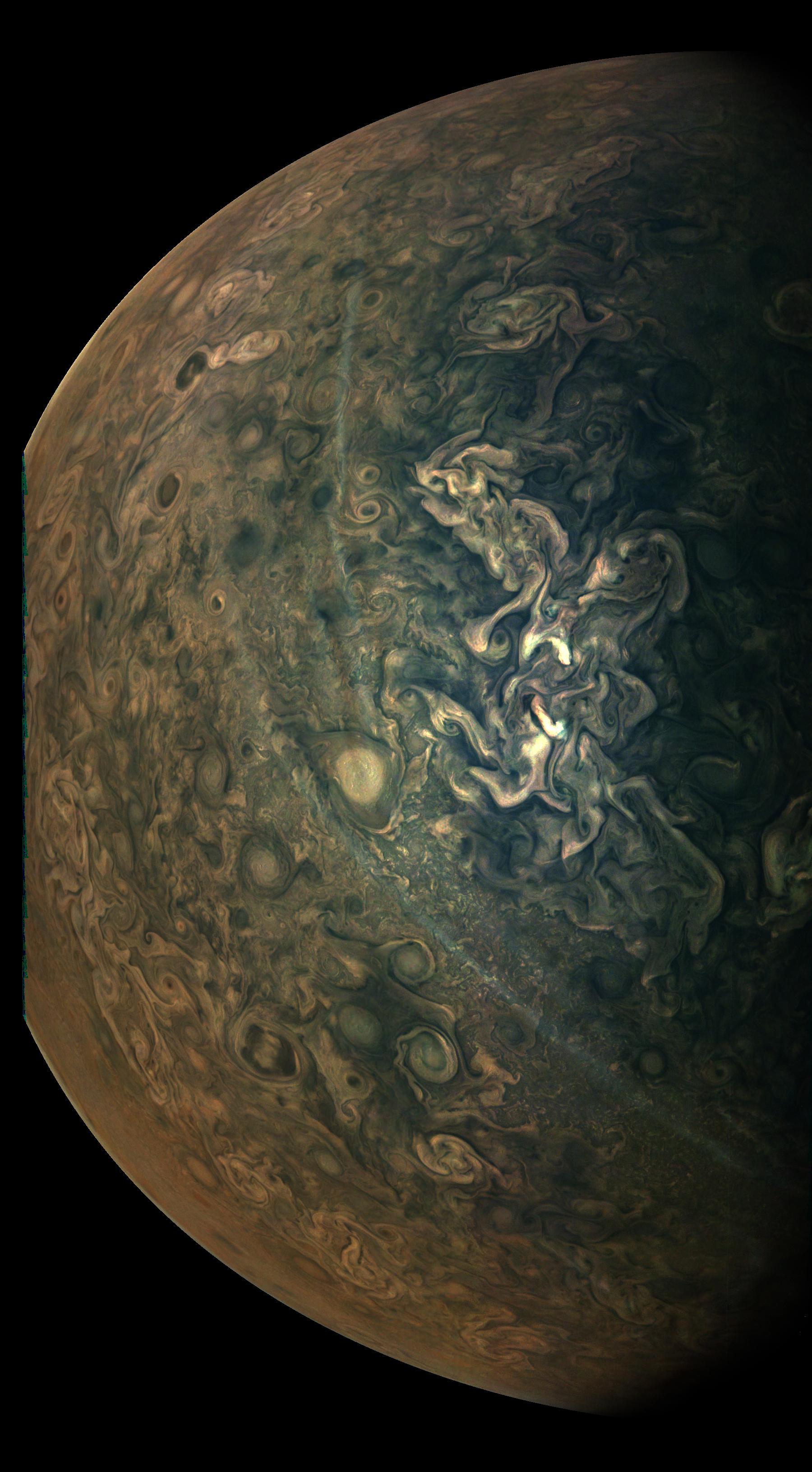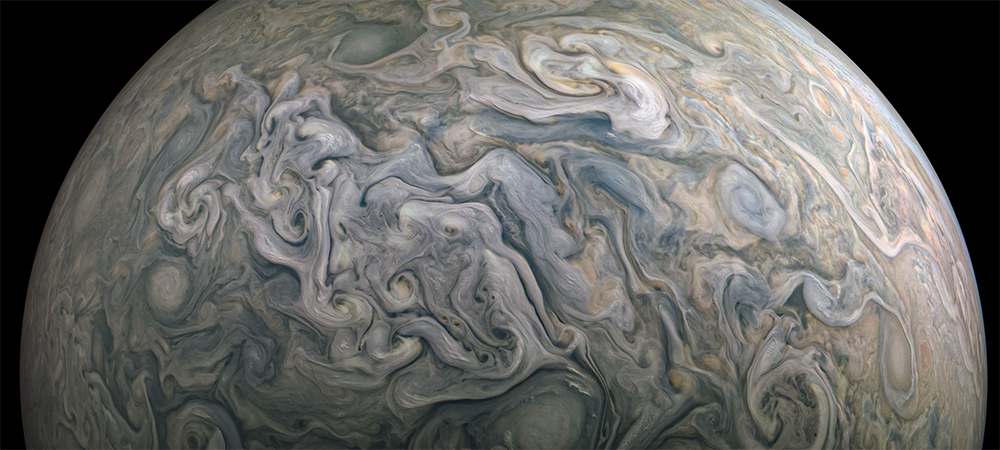Get lost in Jupiter's haze thanks to new pictures from NASA spacecraft
For your weekend enjoyment, we present another installment of the beautifully swirly atmosphere if Jupiter.
NASA recently released two images captured by its Juno spacecraft, which has been orbiting the gas giant since the summer of 2016. Both images show massive swaths of the planet's marbled clouds.
Related: JunoCam Jupiter images: Where science meets art

An image captured on Feb. 17 of this year shows striking streaks of haze particles draped above the main clouds in Jupiter's atmosphere vertically across the center of the image. The haze is a puzzle: scientists can't figure out its cause or composition, according to a NASA statement. One hypothesis is that the jet stream bands that surround the haze's usual area may contribute to its formation.
When Juno captured the image, the spacecraft was about 15,610 miles (25,120 kilometers) above Jupiter's clouds.

A second image, captured on April 10, offers a much closer look at the planet's atmosphere, taken from just 5,375 miles (8,650 km) up. On display in this image are small clouds that scientists have dubbed "pop-up" clouds because they stick out brightly at the edges of the atmosphere's swirls, according to a NASA statement.
Juno will continue studying Jupiter, making close passes over its clouds every 53 days, until at least July 2021.
Get the Space.com Newsletter
Breaking space news, the latest updates on rocket launches, skywatching events and more!
- Photos: Jupiter, the solar system's largest planet
- In photos: Juno's amazing views of Jupiter
- Incredible NASA photos show Jupiter's marbled atmosphere
Email Meghan Bartels at mbartels@space.com or follow her @meghanbartels. Follow us on Twitter @Spacedotcom and on Facebook.
OFFER: Save 45% on 'All About Space' 'How it Works' and 'All About History'!
For a limited time, you can take out a digital subscription to any of our best-selling science magazines for just $2.38 per month, or 45% off the standard price for the first three months.
Join our Space Forums to keep talking space on the latest missions, night sky and more! And if you have a news tip, correction or comment, let us know at: community@space.com.

Meghan is a senior writer at Space.com and has more than five years' experience as a science journalist based in New York City. She joined Space.com in July 2018, with previous writing published in outlets including Newsweek and Audubon. Meghan earned an MA in science journalism from New York University and a BA in classics from Georgetown University, and in her free time she enjoys reading and visiting museums. Follow her on Twitter at @meghanbartels.
-
Lovethrust “On display in this image are small clouds that scientists have dubbed "pop-up" clouds because they stick out brightly at the edges of the atmosphere's swirls”Reply
The white clouds are actually upwelling so the “pop-up” description is quite apropos. The whiteness is caused by ammonia crystalizing out of the atmospheric because of the colder temperatures as they rise. The brown cloud tops are at 200 K (−100 °F, −70 °C) but it drops all the way to120 K (−240 °F, or −150 °C) on the white cloud tops!










